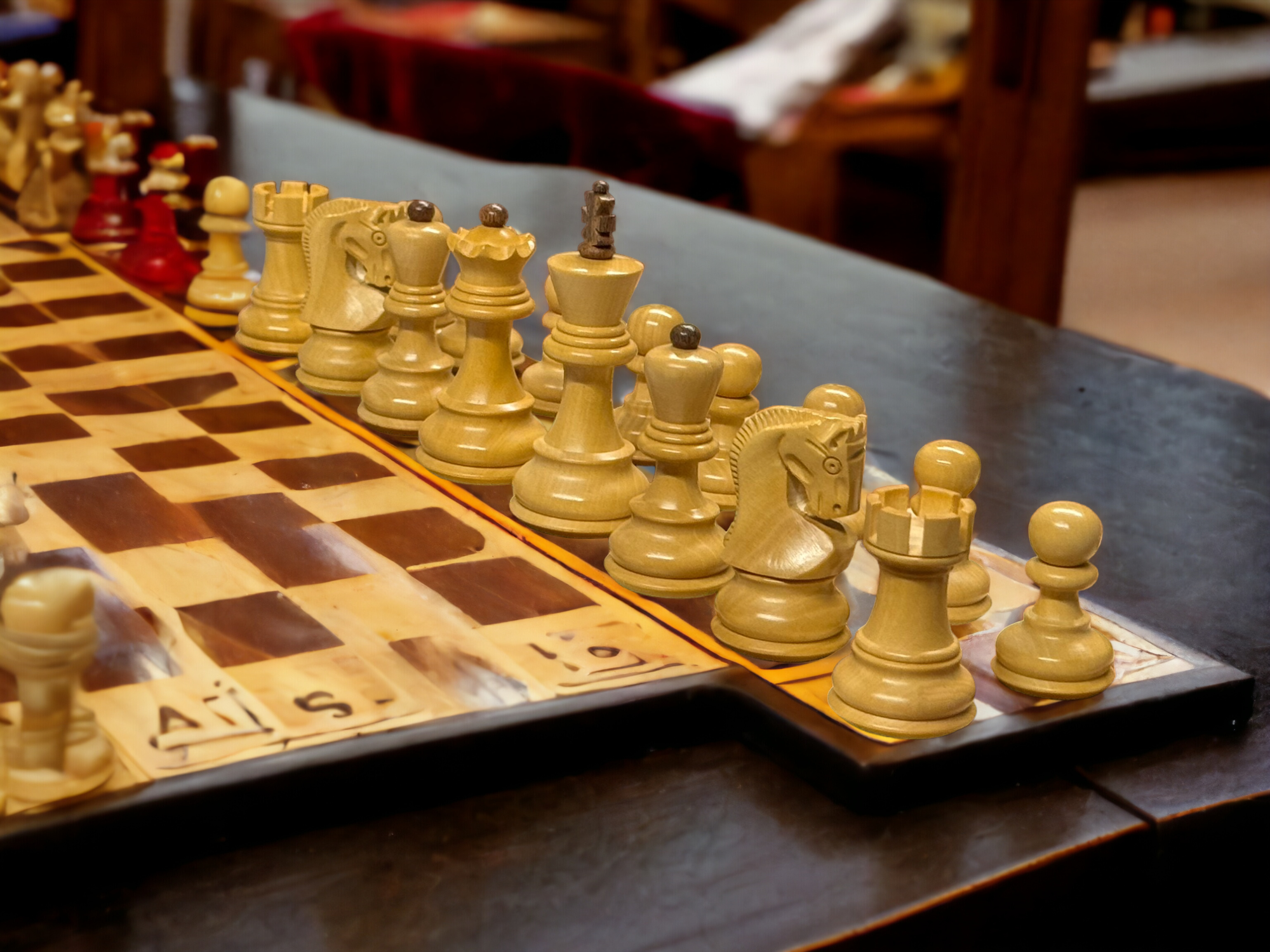Our collection primarily consists of wooden chess sets, with some crafted from bone or metal. Responding to numerous inquiries about the specific types of wood used, we've compiled this informative guide detailing the various wood species employed in crafting chess pieces. Common names often lead to confusion, as multiple tree species share the same designation. For instance, Ebony serves as a common name for at least six distinct tree species, ranging in colour from medium striped brown (Diospyros mindanaensisto) to deep black (Dalbergia melanoxylon). Interestingly, the Dalbergia genus, usually associated with Rosewoods, is not commonly linked with Ebonies. To address this confusion, we've included scientific names (genus and species) to accurately distinguish these woods.
Rosewood
The Rosewood commonly utilized for chess pieces belongs to the species Dalbergia latifolia, scientifically known as East Indian Rosewood, Malabar, and Bombay Blackwood. Although the Dalbergia genus generally encompasses all Rosewood species worldwide, the majority of chess piece wood originates from India. Found in dry deciduous forests across the Indian peninsula, its optimal growth conditions are reported in Bombay. This wood, ranging in colour from rose to dark brown with darker lines, is challenging to carve, a testament to the craftsmanship of chess piece artisans. The crossed, narrowly interlocked grain, coupled with darker streaks, lends the wood an attractive appearance. With proper preparation, it exhibits excellent finishing and polishing characteristics.
Bud Rosewood
Derived from the same species as Rosewood (Dalbergia latifolia), Bud Rosewood comes exclusively from the tree's roots, making it rarer than normal Rosewood. With a unique wine burgundy colour, Bud Rosewood shares the same growth regions and characteristics as Rosewood. Its colour range, from rose to dark brown with darker lines, along with crossed, narrowly interlocked grain, contributes to its attractive appearance. With proper preparation, it displays excellent finishing and polishing characteristics, particularly in the root part of the Dalbergia tree.
Boxwood (or Chidar)
Boxwood, or Chidar, commonly used for white and some black chess pieces, is from the species Gossypiospermum praecox, scientifically known as West Indian Boxwood. Native to the Dominican Republic and the Maracaibo Lake region of Venezuela, it thrives on dry chalky or rock slopes. Exhibiting a very fine and uniform texture with a straight grain and high lustre, it is easily turned on a lathe. Its colouring, usually a light yellow-brown with hints of red tones, makes Boxwood an excellent choice for white chess pieces. The wood accepts stains well, and many stained black pieces are made from stained boxwood or chidar.
Ebony
Highly sought-after for expensive chess sets, Ebony wood comes from the tree Diospyros melanoxylon, known as East Indian Ebony, Marblewood, and Tendu. Common in deciduous forests across central provinces, Chota Nagpur, Behur, southern India, and the entire Indian Peninsula, its heartwood is a deep, slightly grained black. More brittle than the sapwood, it has a fine and even texture, exhibiting excellent finishing and polishing characteristics. While tough to carve, the deep luster and total blackness of the blocks create exceptional, true black chess pieces. Ebony, a traditional choice, is sometimes substituted with Dalbergia melanoxylon, a nearly black rosewood referred to as "striped" ebony.
Walnut
Occasionally used for chess pieces, Walnut, particularly European Walnut (Juglans regia), has limited availability. Believed to have been introduced to western Europe by the Romans, it has a grayish-brown background with irregular dark streaks. The grain is usually straight, occasionally wavy, and the wood boasts high natural durability. European Walnut has excellent polishing properties and staining qualities, but UV light inhibitors are essential in finishes to prevent colour bleaching. Some manufacturers may also use North American relatives like Black Walnut (Juglans nigra) for a darker colour.
Sheesham
A popular choice for chess pieces is Sheesham, typically of the species Dalbergia sissoo. Found throughout the sub-Himalayan region, from the Indus to Assam, it grows in mixed stands on new alluvial lands or low riverbanks. Sheesham's heartwood, described as golden brown to deep brown with darker streaks, is hard with a uniform and medium-coarse texture. Highly resistant to decay, it is rarely attacked by borers and ants. Known for good carving properties, it is considered one of the two most popular carving and engraving woods in India. Sheesham also peels exceptionally well, producing highly decorative veneers easily applied.



